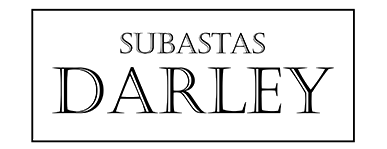LIVE AUCTION IN OCTOBER 2023 - ASIAN ART
Jade "horse head", Han dynasty
Press 'Program an autobid'in order to confirm
Finely carved and polished green jade of the Han or later dynasty. Horse head that may have been part of a complete horse attached in sections, in this case to a torso by the joint at the base. The inside of the joint is lined with a wooden ring.
The head is depicted in a realistic way that conveys vigor. All the details are well represented, highlighting the muscles, marked cheekbones, dilated pits and bulging eyes. The elements are highlighted, including the reins held with the mouth. The mane is represented open in the fringe with incised tufts, as in the back fall. The eyes are expressive, open and the eyebrows draw an almost right angle. The neck is arched with the head bent and the gaze forward. The ears are pointed and placed swept back.
It is worth noting the perfection in the representation of the figure. Due to the passage of time, the jade shows oxidation with signs of wear or patina and cracks. In many places the natural veins of the stone are easily observed.
In imperial China, the horse played an important and expanding role in the artistic tradition. In Han times, horses played an important role in the "Han-Xiongnu War", which made them a symbol of status and power. In addition, in the Taoist cult it was believed that jade could preserve the body and transport the occupant to the world of the dead.
It is likely that the figure was intended to be part of a trousseau, like a "mingqi" but made of a precious material. There are examples of jade horses, although few of them are complete. The jade representations are very special.
Height: 19.6 cm; Width: 24 cm; Base measures: 15.6 x 8.6 cm; Weight: 4190 g.
Provenance: European private collection, Spain, originating in the early 20th century.
References:
Sotheby's. Live auction, September 22, 2020, lot 252. Auction price: 746,000 USD.
V&A Museum, registration number A.16-1935 "Head of a horse - Figurine 206 BC- 220 AD (made)".






















